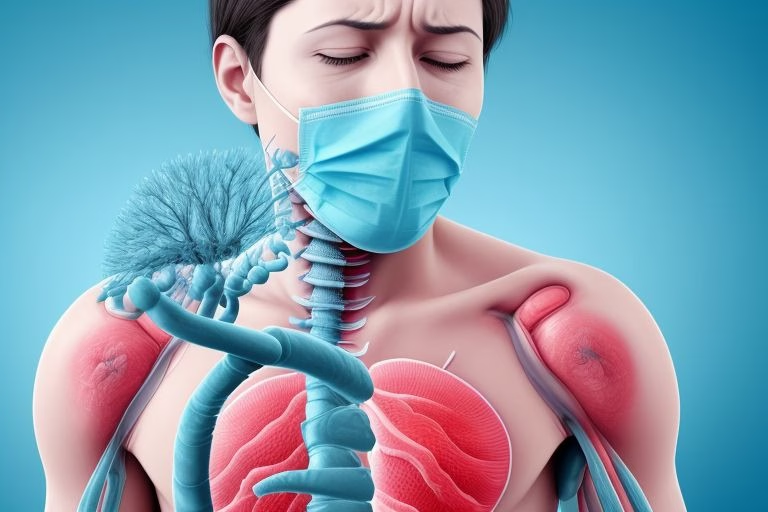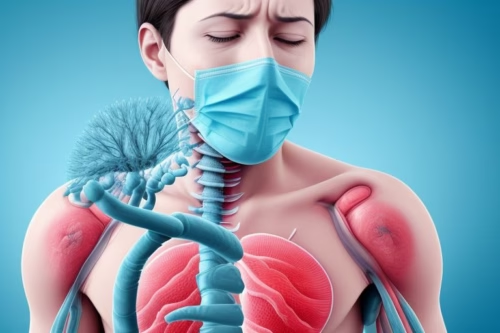
Are you worried about an unexpected rash or skin eruption? If you’ve noticed a maculopapular eruption, you’re likely looking for answers. Maculopapular eruptions can appear suddenly, causing discomfort and confusion. But don’t worry – you’re not alone, and the good news is that with the right knowledge, you can address it effectively!

In this comprehensive guide, we’ll break down everything about maculopapular eruptions, from causes and symptoms to treatment options. Whether you’re experiencing one for the first time or just curious, you’ll find all the information you need here to understand and manage this condition.
What Are Maculopapular Eruptions?
Maculopapular eruptions refer to a type of rash that includes both macules (flat, discolored spots) and papules (raised bumps). These rashes are commonly seen in viral infections, but they can also arise from allergic reactions or other medical conditions.
This skin condition may appear as red or pink patches, often starting on the trunk and spreading to other areas. While maculopapular eruptions are not usually a cause for major concern, they can be uncomfortable and sometimes signal a more serious underlying issue.
Symptoms of Maculopapular Eruptions
If you’re dealing with a maculopapular rash, you might notice the following signs:
- Red or pink rash that appears on the skin
- Flat and raised spots (macules and papules)
- Itchiness or irritation
- Fever or general body discomfort (common in viral infections)
- Swelling or pain in some cases
What Causes Maculopapular Eruptions?
There are several reasons why you might develop a maculopapular eruption. Understanding the cause is essential for choosing the right treatment.
1. Viral Infections
Many maculopapular eruptions are triggered by viral infections. Some common viruses that cause these eruptions include:
- Measles: A highly contagious disease that causes a classic maculopapular rash. It usually starts behind the ears and spreads to the face and body.
- Rubella (German Measles): A mild viral infection causing a red rash, often accompanied by mild fever.
- Parvovirus B19: This virus causes fifth disease, with a characteristic “slapped cheek” rash.
- Cytomegalovirus (CMV): Known to cause flu-like symptoms and skin rashes in infants and people with weak immune systems.
- Enterovirus: Another virus that can cause a rash similar to maculopapular eruptions.
2. Bacterial Infections
Though less common, bacterial infections like scarlet fever or streptococcal throat infections can trigger maculopapular rashes. If left untreated, these infections can lead to serious complications.
3. Drug Reactions
Certain medications can cause maculopapular eruptions as a side effect. Some of the drugs that might cause this condition include:
- Antibiotics
- Anticonvulsants
- Pain relievers
4. Allergic Reactions
Some allergic reactions, particularly those to food, plants, or insect stings, may lead to a maculopapular rash.
5. Autoimmune Diseases
Conditions like lupus or rheumatic fever can sometimes present with maculopapular eruptions as one of their symptoms.
How to Diagnose Maculopapular Eruptions
A thorough evaluation by a healthcare professional is the best way to confirm whether you have maculopapular eruptions. Your doctor will typically:
- Examine the rash to determine its appearance and location.
- Ask about your medical history to see if there’s a viral or bacterial infection.
- Perform tests, such as blood tests or skin biopsies, if necessary.
Early diagnosis is key, especially if the eruption is a sign of an underlying infection.
Treatment Options for Maculopapular Eruptions
Once a maculopapular eruption is diagnosed, it’s important to choose the appropriate treatment method. The treatment plan will depend on the underlying cause of the rash.
1. Treating Viral Infections
For maculopapular eruptions caused by viral infections, treatment typically focuses on managing symptoms:
- Rest and hydration: It’s important to give your body the time and fluids it needs to recover.
- Antipyretics: Medications like acetaminophen can help lower fever and alleviate discomfort.
- Topical creams: Calamine lotion or hydrocortisone can soothe irritated skin.
2. Treating Bacterial Infections
If the maculopapular eruption is due to a bacterial infection, your doctor may prescribe antibiotics. It’s crucial to complete the full course of treatment to prevent further complications.
3. Managing Drug Reactions
If a medication is causing the eruption, your doctor may recommend stopping the drug or switching to a different one. Be sure to consult with a healthcare professional before making any changes.
4. Treating Allergic Reactions
For allergic maculopapular eruptions, antihistamines can help control itching and inflammation. If the cause of the allergy is known, avoiding exposure is the best way to prevent future rashes.
5. Addressing Autoimmune Conditions
If an autoimmune disease is at the root of the rash, medications like corticosteroids or immunosuppressants may be prescribed to manage the underlying condition.
Prevention Tips for Maculopapular Eruptions
While not all maculopapular eruptions can be prevented, there are some steps you can take to reduce your risk:
- Vaccination: Ensure you’re up-to-date with vaccinations for measles, rubella, and other preventable infections.
- Avoiding allergens: If you know what triggers your allergic reactions, take steps to avoid exposure.
- Good hygiene: Wash your hands regularly, especially during cold and flu season.
- Healthy lifestyle: A balanced diet and regular exercise can help strengthen your immune system.
Frequently Asked Questions (FAQs) About Maculopapular Eruptions
What is the difference between maculopapular eruptions and other types of rashes?
Maculopapular eruptions are characterized by a combination of flat and raised spots, which distinguishes them from other rashes that may only involve flat or raised areas.
How long do maculopapular eruptions last?
The duration of a maculopapular eruption depends on its cause. A viral rash may last several days to a week, while rashes caused by allergies or drug reactions may last longer.
Can maculopapular eruptions be contagious?
Yes, some viral causes of maculopapular eruptions, such as measles or rubella, can be contagious. It’s essential to isolate if you suspect a viral infection to avoid spreading it to others.
Conclusion: Understanding and Managing Maculopapular Eruptions
Maculopapular eruptions may seem alarming at first, but with the right knowledge and treatment, they are usually manageable. By understanding the causes and symptoms, you can make an informed decision about how to handle your rash and seek appropriate treatment. Remember, early diagnosis is key for effective treatment.
If you’re experiencing a maculopapular eruption, don’t wait. Consult with a healthcare professional for personalized advice, and try these tips today for a smoother recovery.
Call to Action:
Feeling more confident about maculopapular eruptions? Download our free guide to skin health and stay informed about common skin conditions. Take action now!



